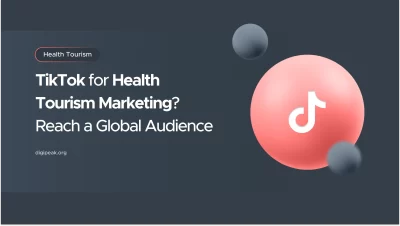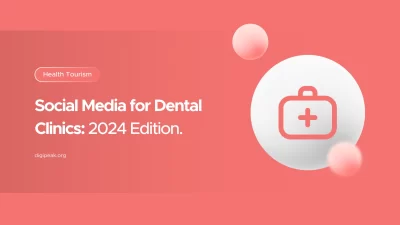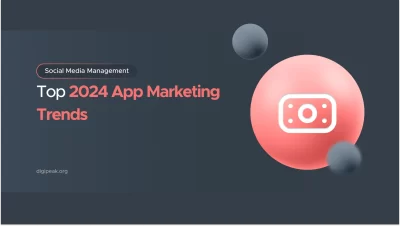
Instagram Tips: Step-by-Step Guide for a Successful Profile
Before moving on to Instagram tips; Instagram significantly impacts not only social life but also …
07/02/2025 -
12 dk okuma
Stay up to date with Peakers
In today’s digital age, social media has become an indispensable tool for businesses across industries. Medical Tourism, a sector that combines healthcare and travel, is no exception. With patients increasingly seeking affordable and high-quality medical treatments abroad, social media marketing has emerged as a powerful way to connect with potential clients, build trust, and establish a global presence.
This blog explores the role of social media marketing in medical tourism, offering actionable strategies to help healthcare providers and medical tourism facilitators thrive in a competitive market.
Got a Hefty Ads Budget but No Conversions?
Get a Free Social Media Audit!
Why are your ad campaigns getting clicks but not converting into purchases? Are you reaching the target audience effectively? Let's evaluate your social media strategy. Fill out the form now for a free analysis!
Medical tourism refers to the practice of traveling to another country to receive medical, dental, or surgical care. Patients often seek treatments abroad due to lower costs, shorter wait times, or access to specialized procedures not available in their home countries. Popular destinations for medical tourism include countries like Turkey, Thailand, Mexico, and South Korea, which offer world-class healthcare facilities at competitive prices.
The global medical tourism market is booming, with millions of patients crossing borders annually. However, with increasing competition, healthcare providers must find innovative ways to stand out. This is where social media marketing comes into play.

Social media platforms like Facebook, Instagram, LinkedIn, and YouTube have transformed how businesses communicate with their audiences. For medical tourism, these platforms offer unique advantages:
Global Reach: Social media allows healthcare providers to connect with potential patients worldwide, breaking down geographical barriers.
Building Trust: Sharing patient testimonials, before-and-after photos, and educational content helps establish credibility and trust.
Cost-Effective Advertising: Compared to traditional marketing methods, social media advertising is affordable and offers precise targeting options.
Engagement and Interaction: Social media enables real-time communication with patients, addressing their concerns and building relationships.
Not all social media platforms are created equal. To maximize your impact, it’s essential to focus on the platforms that align with your target audience’s preferences. Here are the top platforms for medical tourism marketing:
With over 2.9 billion monthly active users, Facebook is a must for medical tourism marketing. Its advanced targeting options allow you to reach specific demographics, such as age, location, and interests. Use Facebook to share patient stories, promote special offers, and engage with your audience through comments and messages.
Instagram’s visual nature makes it ideal for showcasing before-and-after photos, virtual tours of facilities, and behind-the-scenes content. Use Instagram Stories and Reels to create engaging, short-form content that highlights your services and expertise.
YouTube is the second-largest search engine globally, making it a valuable platform for sharing educational videos, patient testimonials, and virtual consultations. Create a channel dedicated to your medical tourism services and optimize your videos with relevant keywords.
Take Advantage of Automation with Artificial Intelligence!
How can you use your time more efficiently? Artificial intelligence saves you time by automating repetitive tasks. Learn how you can leverage AI to accelerate your business processes.
LinkedIn is a powerful platform for B2B marketing in medical tourism. Use it to connect with travel agencies, insurance companies, and other stakeholders in the industry. Share thought leadership articles, case studies, and industry news to position your brand as an authority.
Twitter is ideal for real-time updates and engaging in industry conversations. Use it to share news, participate in healthcare-related hashtags, and respond to patient inquiries promptly.
Creative content is of great importance for brands in today's digital world. 🧠🦄
— Digipeak Agency (@digipeakagency) October 16, 2023
As Digipeak, we know the importance of creative content and apply it effectively to our customers. 🎨#digipeak #advertisingagency #digitalmarketing #brand #inspiration #creative #marketing pic.twitter.com/7H9vm8K223
To succeed in social media marketing, you need a well-defined strategy. Here are some proven tactics to attract and retain international patients:
Content is king in social media marketing. Focus on creating informative, engaging, and visually appealing content that resonates with your target audience. Examples include:
Collaborate with influencers in the healthcare and travel niches to promote your services. Influencers can help you reach a broader audience and build credibility through their endorsements.
Social media advertising allows you to target specific demographics, such as patients seeking cosmetic surgery, dental implants, or fertility treatments. Invest in paid ads to boost your visibility and drive traffic to your website.
Social media is a two-way street. Respond to comments, messages, and reviews promptly to show that you value your patients’ feedback. Engaging with your audience builds trust and fosters long-term relationships.
Position your brand as a thought leader by sharing industry insights, research findings, and expert opinions. This not only educates your audience but also establishes your credibility in the medical tourism field.
Use relevant hashtags and keywords to increase the visibility of your posts. For example, hashtags like #MedicalTourism, #HealthTravel, and #CosmeticSurgeryAbroad can help you reach a wider audience.
Track your social media performance using analytics tools to understand what works and what doesn’t. Adjust your strategy based on data-driven insights to maximize your ROI.
Patient testimonials are a heartfelt way to connect with potential patients, especially in the medical tourism industry. These real-life stories offer a genuine glimpse into the experiences of others, helping to build trust and credibility. When shared thoughtfully on social media, they can inspire confidence and guide new patients in making informed decisions about their care. Here’s how healthcare providers can make the most of patient testimonials in their social media campaigns:
Authenticity is Key: Ensure that testimonials come from real patients and accurately reflect their experiences. Authentic testimonials resonate more with potential patients, as they provide relatable narratives that can alleviate fears and uncertainties about seeking medical care abroad.
Diverse Experiences: Showcase a variety of testimonials that reflect different medical conditions, treatments, and patient backgrounds. This diversity allows a broader audience to connect with the stories shared, increasing the overall impact of the testimonials.
Written Testimonials: Share written testimonials on social media platforms, accompanied by images of the patients (with their consent). This adds a personal touch and enhances relatability.
Video Testimonials: Video testimonials can be particularly engaging. They capture the emotions and sincerity of patients, providing a more immersive experience. Videos can be shared on platforms like YouTube, Instagram, and Facebook, allowing for greater reach and engagement.
Infographics: Create infographics that summarize key patient experiences and outcomes. This visual representation can make the information more digestible and shareable, attracting more attention on social media.
Content Marketing: Incorporate testimonials into broader content marketing strategies. For example, create blog posts that feature patient stories alongside informative content about specific treatments or procedures. This approach not only highlights patient experiences but also provides valuable information to potential patients.
Social Media Posts: Regularly post testimonials on social media, using eye-catching graphics or videos. Consider creating a dedicated series, such as “Testimonial Tuesdays,” to consistently engage your audience and keep patient stories at the forefront of your health marketing efforts.
Call to Action: Encourage followers to share their own experiences or ask questions related to the testimonials. This interaction can foster a sense of community and trust among potential patients.
Live Q&A Sessions: Host live sessions on platforms like Instagram or Facebook where former patients can share their experiences and answer questions from potential patients. This real-time interaction can significantly enhance trust and transparency.
SEO Benefits: Incorporate patient testimonials into your website and social media profiles with relevant keywords. This not only improves the visibility of your content but also enhances the credibility of your healthcare services. Search engines favor user-generated content, making testimonials a valuable asset for SEO.
Regular Updates: Keep testimonials fresh by regularly updating them. Search engines and potential patients alike prefer current content, so ensure that testimonials are refreshed every few months to maintain relevance.
Showcase on Multiple Platforms: Share testimonials across various social media platforms, including Facebook, Instagram, LinkedIn, and Twitter. This multi-channel approach maximizes visibility and reinforces the credibility of your services.
Highlight Positive Reviews: Actively encourage satisfied patients to leave reviews on platforms like Google, Yelp, and health-specific review sites. Positive reviews can serve as powerful testimonials that enhance your online reputation and attract new patients.
Proactive Management: While focusing on positive testimonials, it’s also essential to address any negative feedback transparently. Responding to negative reviews in a professional manner can demonstrate your commitment to patient satisfaction and willingness to improve.
Learning Opportunity: Use negative feedback as a learning opportunity. Share how you’ve addressed concerns raised by patients, which can further enhance trust and show potential patients that you value their input.
Analytics Tools: Utilize social media analytics tools to measure the impact of your testimonial campaigns. Track engagement rates, shares, and conversions to understand which testimonials resonate most with your audience.
Feedback Loop: Regularly solicit feedback from patients about their experiences with your social media content. This can help refine your strategies and ensure that you are effectively meeting the needs and preferences of your audience.

Social media marketing has become an essential strategy for healthcare providers in the medical tourism industry. However, while it offers numerous opportunities for engagement and visibility, it also presents several challenges that can hinder effective marketing efforts. Understanding these challenges is crucial for healthcare providers aiming to leverage social media to attract international patients. Here are the key challenges they face:
Healthcare providers must navigate a complex landscape of regulations when marketing their services on social media. Compliance with laws such as the Health Insurance Portability and Accountability Act (HIPAA) in the United States is critical. These regulations govern patient privacy and the sharing of health information, making it essential for providers to ensure that their social media content does not violate any legal standards. Failure to comply can lead to severe penalties and damage to the provider’s reputation.
Social media platforms are public forums where patients can share their experiences, both positive and negative. While positive reviews can enhance a provider’s reputation, negative feedback can quickly spread and deter potential patients. Healthcare providers must have a strategy in place to address negative comments and reviews professionally and promptly. This requires a dedicated team to monitor social media channels and respond to feedback, which can be resource-intensive.
In the medical tourism sector, trust is paramount. Patients are often making significant financial and health-related decisions based on the information they find online. Establishing credibility through social media can be challenging, especially for providers that are new to the market or lack a strong online presence. Providers must consistently share high-quality content, patient testimonials, and success stories to build trust with potential patients.
Medical tourism often involves serving a diverse clientele from various cultural backgrounds. Marketing messages must be culturally sensitive and tailored to resonate with different audiences. Additionally, language barriers can complicate communication and marketing efforts. Providers must ensure that their content is accessible and understandable to potential patients from different linguistic backgrounds, which may require translation services or localized content strategies.
Creating engaging and informative content is crucial for successful social media marketing. However, healthcare providers often struggle with producing high-quality content consistently. This challenge is compounded by the need to stay updated on industry trends, medical advancements, and patient concerns. Providers must allocate sufficient resources—both time and personnel—to develop a robust content strategy that includes educational articles, videos, and interactive posts.
Determining the effectiveness of social media marketing efforts can be difficult. Healthcare providers often face challenges in tracking metrics such as engagement rates, conversion rates, and overall ROI. Without clear metrics, it can be challenging to justify marketing expenditures or make informed decisions about future strategies. Providers need to implement analytics tools and establish key performance indicators (KPIs) to measure the success of their social media campaigns effectively.
The medical tourism industry is becoming increasingly competitive, with numerous providers vying for the attention of potential patients. Standing out in a crowded market requires innovative marketing strategies and a strong brand identity. Providers must differentiate themselves by highlighting unique selling points, such as specialized services, advanced technology, or exceptional patient care. This differentiation is essential to attract and retain patients in a saturated market.
Managing social media accounts effectively requires a significant investment of time and resources. Many healthcare providers may not have dedicated marketing teams, leading to inconsistent posting and engagement. Additionally, the fast-paced nature of social media means that providers must be proactive and responsive, which can be challenging for organizations with limited staff or budget constraints.
The internet is rife with misinformation, and patients often encounter unreliable health information online. This can lead to confusion and mistrust among potential medical tourists. Healthcare providers must strive to provide accurate and evidence-based information while also combating misinformation. This requires a commitment to transparency and education, which can be resource-intensive.
Marketing medical services, especially in the context of medical tourism, raises ethical concerns. Providers must navigate the fine line between promoting their services and ensuring that they do not exploit vulnerable patients. Ethical marketing practices are essential to maintain the integrity of the healthcare profession and build long-term relationships with patients
Social media marketing is a game-changer for the medical tourism industry. By leveraging platforms like Facebook, Instagram, and YouTube, healthcare providers can reach a global audience, build trust, and grow their business. However, success requires a well-planned strategy, high-quality content, and consistent engagement.
As the medical tourism market continues to expand, those who embrace social media marketing will have a competitive edge in attracting and retaining international patients. If you want to be one of them, DigiPeak is here to help! At Digipeak, we help healthcare providers craft powerful social media strategies that drive patient engagement and growth.
Get an Offer


Join Us So You Don't
Miss Out on Digital Marketing News!
Join the Digipeak Newsletter.
Related Posts

Before moving on to Instagram tips; Instagram significantly impacts not only social life but also …

In recent years, health tourism has grown into a thriving industry, attracting people worldwide in …

Social media is now practically essential for every sector. The healthcare sector too falls in …

Our world is becoming more and more centered around mobile applications. With millions of apps …